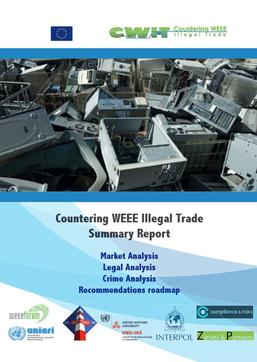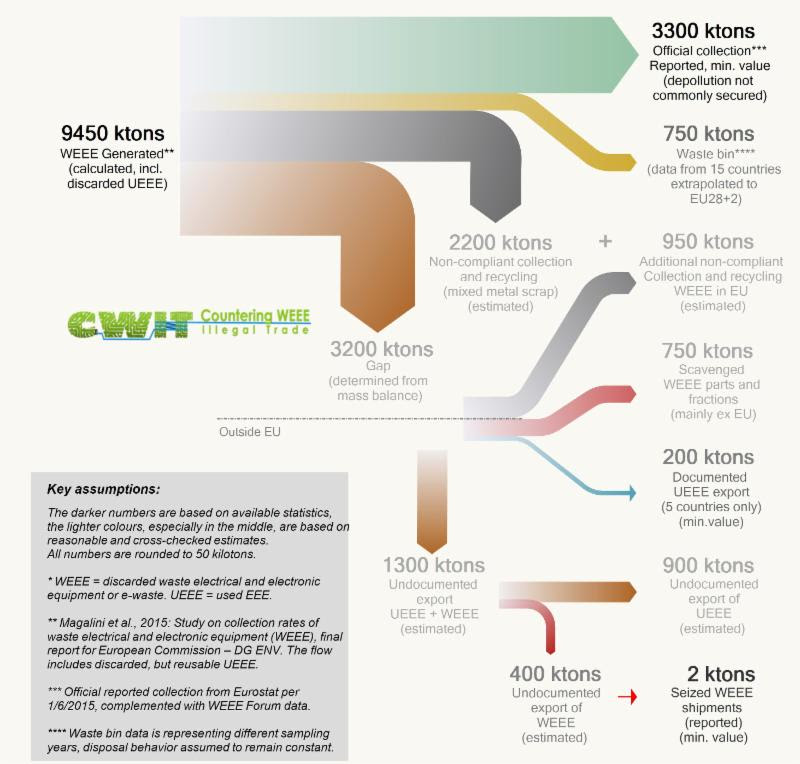
UNU Report reveals mismanaged WEEE volumes within Europe to be even higher than those exported
A team of experts from UNU, WEEE Forum and INTERPOL among others have completed a 2-year study on illegal WEEE (waste of electronic and electrical equipment) trade within the EU and including Switzerland and Norway. They summarize that only 35% of all the e-waste discarded in 2012 (6.45 million tons in total) ended up in the officially reported amounts of collection and recycling systems.
But export (mainly illegal) is only one option where large volumes are channeled, estimated at 1.6 million tons: A ten times higher number of discarded products is wrongfully mismanaged or illegally traded within Europe itself. The material is recycled under non-compliant conditions, scavenged for valuable parts or wrongly disposed of in ordinary waste bins. These activities bring a serious economic loss of materials and resources for compliant e-waste processors in Europe.
The final report recommends implementing measures to close this inner-European gap in a multi-stakeholder approach. A roadmap with short, medium, and long term recommendations suggests measures such as better guidelines and formal definitions to help authorities distinguish used, non-waste electronic and electrical equipment, a harmonization of penalties to simplify enforcement in trans-border cases and an Operational Intelligence Management System (OIMS) to support intelligence-led enforcement and identify the risks associated with organized crime groups.
Additionally, the authors call for a mandatory treatment of all WEEE according to approved standards and a dedicated mandatory reporting of treatment and de-pollution results.
Compliance schemes or solutions for OEM-run take-back and recycling, as designed and operated by the Reverse Logistics Group facilitate a professional treatment of WEEE while providing full transparency through IT-based mass flow tracking and comprehensive reporting. Following the report, a strengthening of those systems by e.g. incentivizing OEMs for their take-back and recycling activities could therefore help to get better access to end-of-life products including functioning products in order to route them through official and professional channels maximizing life cycle, and providing environmentally sound management of non-functioning products to ensure highest yields of resource recovery.
The full report can be downloaded here: http://www.cwitproject.eu/wp-content/uploads/2015/08/CWIT-Final-Summary1.pdf

The 2012 EU WEEE Flows. © CWIT
